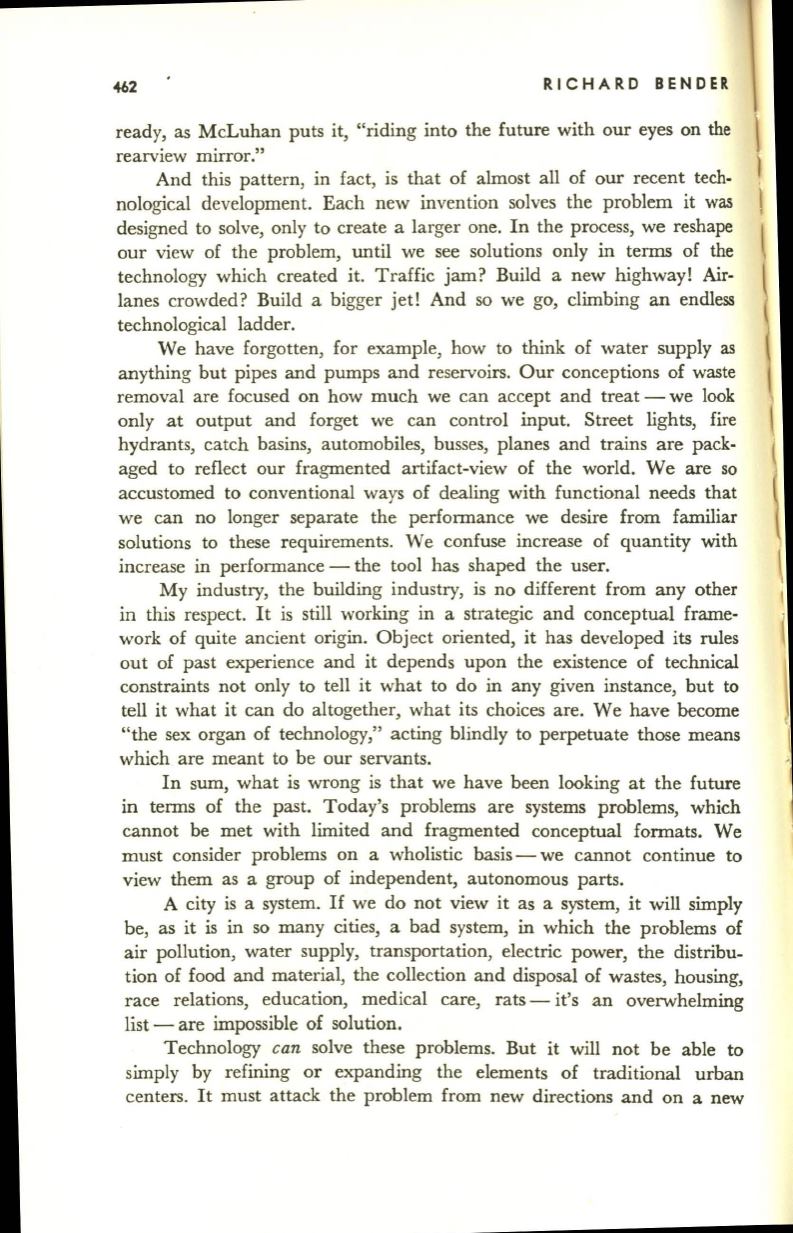
462
RICHARD BENDER
ready, as McLuhan puts it, "riding into the future with our eyes on the
rearview mirror."
And this pattern, in fact, is that of almost all of our recent tech·
nological development. Each new invention solves the problem it was
designed to solve, only to create a larger one. In the process, we reshape
our view of the problem, until we see solutions only in terms of the
technology which created it. Traffic jam? Build a new highway! Air–
lanes crowded? Build a bigger jet! And so we go, climbing an endless
technological ladder.
We have forgotten, for example, how to think of water supply as
anything but pipes and pumps and reservoirs. Our conceptions of waste
removal are focused on how much we can accept and treat - we look
only at output and forget we can control input. Street lights, fire
hydrants, catch basins, automobiles, busses, planes and trains are pack–
aged to reflect our fragmented artifact-view of the world. We are so
accustomed to conventional ways of dealing with functional needs that
we can no longer separate the performance we desire from familiar
solutions to these requirements. We confuse increase of quantity with
increase in performance - the tool has shaped the user.
My industry, the building industry, is no different from any other
in this respect. I t is still working in a strategic and conceptual frame–
work of quite ancient origin. Object oriented, it has developed its rules
out of past experience and it depends upon the existence of technical
constraints not only to tell it what to do in any given instance, but to
tell it what it can do altogether, what its choices are. We have become
"the sex organ of technology," acting blindly to perpetuate those means
which are meant to be our servants.
In sum, what is wrong is that we have been looking at the future
in terms of the past. Today's problems are systems problems, which
cannot be met with limited and fragmented conceptual formats. We
must consider problems on a wholistic basis - we cannot continue to
view them as a group of independent, autonomous parts.
A city is a system.
If
we do not view it as a system, it will simply
be, as it is in so many cities, a bad system, in which the problems of
air pollution, water supply, transportation, electric power, the distribu–
tion of food and material, the collection and disposal of wastes, housing,
race relations, education, medical care, rats - it's an overwhelming
list - are impossible of solution.
Technology
can
solve these problems. But it will not be able to
simply by refining or expanding the elements of traditional urban
centers. It must attack the problem from new directions and on a new


